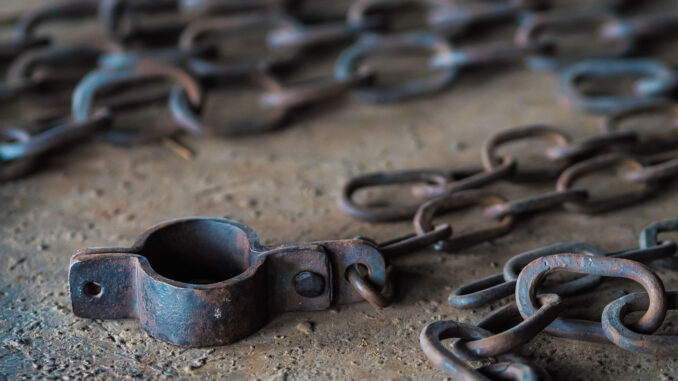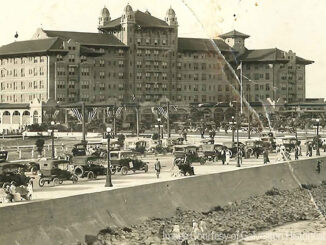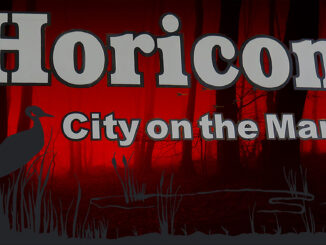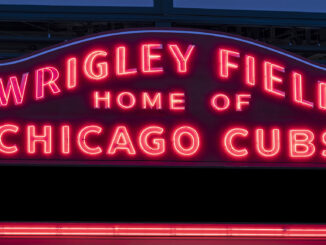
Far in southeast Illinois is Gallatin County, a rural county that borders Kentucky. It was there in the 1830s when John Hart Crenshaw, a local businessman who made his fortune in salt, traded in a much different commodity – human beings. The home he built, Hickory Hill, was a place of untold suffering and cruelty. That suffering remains today making this southern Illinois mansion a true house of horror.
Salt is something we take for granted in our modern era. Everything from eggs to movie theater popcorn is seasoned with it. However, salt wasn’t always so readily available for mass consumption. There was a time it was so hard to come by that salt was used as currency. In the 1830s, a rich deposit of salt was discovered in Gallatin County and opportunists came from all over the country to capitalize on the precious mineral. John Hart Crenshaw was one of those eager opportunists.
Crenshaw leased the state-owned salt works and the mining of salt made him a very rich man. Nevertheless, Crenshaw found himself with a bit of a manpower problem. Work in salt mines was notoriously back breaking and dangerous. Locals knew this and we’re not busting down Crenshaw’s doors looking for work. So, Crenshaw took advantage of a practice that would benefit him immensely. Although Illinois entered the Union as a free state, the government did allow mine owners to lease slaves from slave states that bordered Illinois. Crenshaw got his workers and didn’t have to pay them a dime.
Over time, Illinois finally saw the light, coming to the conclusion that slave leasing was not humane and outlawed it. With the new law in place, Crenshaw feared his business and fortune would suffer. Because of this, Crenshaw turned to men called “night riders.” Night riders were bands of men paid to seek out men, women and children desperately making their way to freedom and returning them to plantations in the south. But these sinister outlaws didn’t just stop at escaping slaves. It wasn’t uncommon for them to abduct free people of color and sell them into bondage at slave auctions. Crenshaw and his night riders, you could say, established a kind of reverse underground railroad
With his reverse underground railroad in place, Crenshaw needed a base of operations. In 1833, he had a grand house built on a hill overlooking the Saline River. By all appearances it was a typical 19th century mansion built in the Greek revival style. Crenshaw hosted lavish parties, and among his guests were governors, captains of industry and even future president, the great emancipator himself, Abraham Lincoln. Crenshaw’s house was greatly admired, but it was what they didn’t see that scandalized Crenshaw and led to his eventual downfall.
Crenshaw had features built into the house that made his clandestine business practices easier to engage in. One of those features was a tunnel connecting the basement to the nearby Saline River. Under cover of darkness, Crenshaw and his associates would meet ships carrying captured slaves for his mines, or the night riders would spirit away people of color to southern states for auction.

T-Shirts, Mugs and More!
We now have t-shirts, tarot decks, ESP cards, coffee mugs, face masks, and much more merchandise available for purchase. Every dollar spent helps fund Paranormal Study!
The attic of the house was where the real nightmares of Hickory Hill took place. Small, cramped cells were built into the walls of the steamy third floor where men, women and children were held against their will. While visitors to Hickory Hill were congratulating John Crenshaw on his business acumen, human beings were being abused and held in chains just over their heads.
The tides for Crenshaw began to change in 1842. Crenshaw’s side hustle was discovered when his employees kidnapped a free woman of color along with her children and attempted to sell them. Crenshaw was brought up on charges of illegal slave trading and abduction. Crenshaw predictably was acquitted of all charges in a court of law; however, the court of public opinion was an entirely different matter.
When his crimes became public knowledge, Crenshaw’s mill was burned to the ground by an angry mob. With his business holdings in shambles, Crenshaw and his family fled their home and moved to Equality, Illinois. John Crenshaw, former salt mine mastermind, died in disgrace in 1871.
Hickory Hill sat empty for many years and the locals gave it a name to reflect its infamous past, “The old slave house.” The house also gained a reputation for being haunted by the men and women who knew nothing but suffering behind its walls. Despite the stories, the Sisk family purchased the house in 1906. Without delay they went about the task of renovating the house. By 1920, they opened the house to the curious who paid a small fee for tours of the house where slavery in Illinois existed. It wasn’t long before the owners and visitors learned the house was haunted by more than just the memories of its past.
Visitors to the house reported sensations of nausea and dread as they made their way up the stairs leading to the attic. While exploring its shadowy recesses, they could hear the unmistakable sounds of sobbing, voices pleading for help and songs belonging to an age long since passed. But it’s the apparitions encountered in the darkness that are truly bone chilling.
Full bodied apparitions of people in tattered clothing and bloody injuries are regularly seen wandering the cramped cells in the attic. Other ghosts are seen either chained to the walls or the floors crying and begging to be set free. According to eyewitnesses as they fade away, a deep sense of hopelessness and despair hang heavily in the air.
In those days, reports of ghostly apparitions were problematic for businesses and were known to drive people away. Not so with the old slave house. Thrill seekers would flock to Hickory Hill and pay top dollar for the privilege of spending the night in the hellish attic. Oftentimes, one of those courageous souls would flee in the middle of the night never to return, later claiming they were attacked by an unseen, aggressive force. The owners had to finally bring this practice to an end when a ghost hunter stumbled and knocked over a lantern, nearly burning the house to the ground.
It was many years before Mr. Sisk allowed anyone in the attic. All that changed in 1978, when he opened the attic up to local radio personality David Rodgers for some spooky Halloween fun.
The DJ was determined to get to the bottom of the stories of ghosts in the old slave house. To this day, Rodgers is the only person to ever last the night in the haunted attic. And for his bravery he was greatly rewarded. On his show the DJ recounted his experiences in the haunted attic of the old slave house. Rodgers captured voices on a recording device he didn’t hear with his own ears at the time. Some of those voices were begging for help while others sang old songs not heard in over a century. David Rodgers may have entered that attic a skeptic. But he came down a believer.
Today, Hickory Hill is known as the Crenshaw State Historic Site and is on the National Register of Historic Places. The house is once again open for daily tours. The state has desperately tried to downplay the stories of hauntings but to no avail. The troubled souls of these men and women held in cruel bondage so long ago are still said to inhabit the attic. And if the stories are to be believed, they don’t like visitors.
If you found the content in this article to be of any value to your paranormal studies, please let us know in the comments below. Feel free to share this article with your friends as well because if you found it interesting, they might too.
Do You Want To Know More?
Our content creators also have podcasts that go much deeper into paranormal topics.
Tim Woolworth’s Walk in the Shadows, an episodic masterclass that consists of a deep dive into all things Fortean, paranormal and supernatural.
Rick Hale teams up with Stephen Lancaster in The Shadow Initiative where they explore various paranormal topics and discuss current paranormal news.
Please check these shows out and visit Paranormal Study social media to keep up to date on articles and all the things our authors are doing.




Be the first to comment